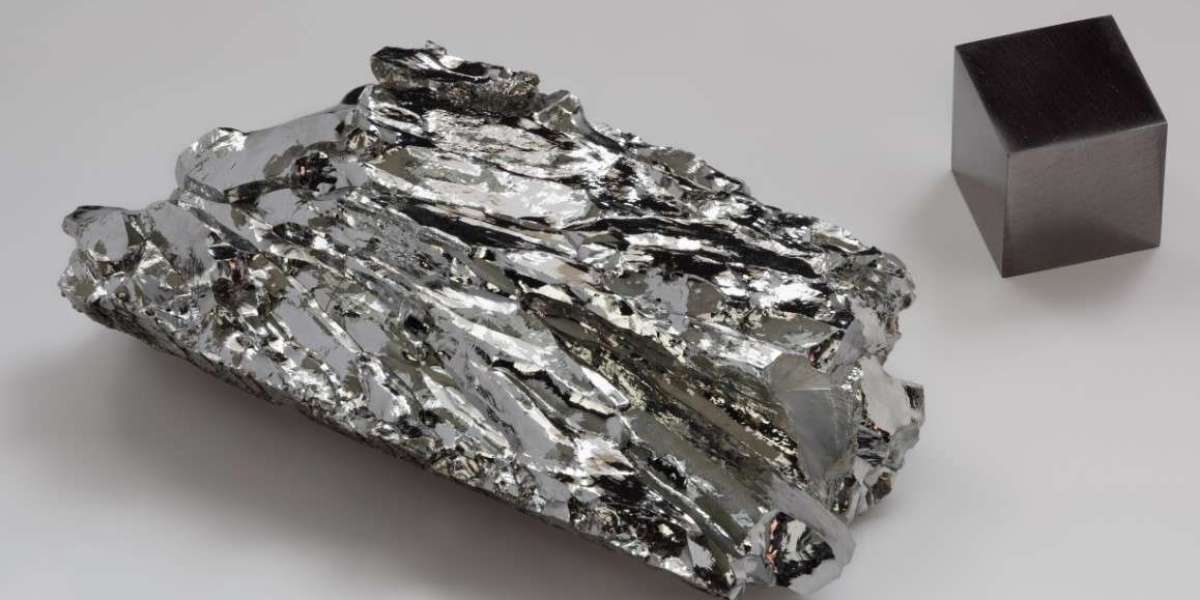The Chemistry of Tungsten: What Makes It So Unique?
Tungsten is one of the most fascinating and unique elements in the periodic table. With its exceptional physical and chemical properties, this rare metal plays a critical role in both industrial and technological applications. But what exactly is it about tungsten that makes it so special? In this in-depth article, we will explore the chemistry of tungsten, its atomic structure, compounds, and the reasons behind its incredible durability, strength, and heat resistance.
An Overview of Tungsten
Tungsten is a chemical element with the symbol W and atomic number 74. It belongs to the transition metals category in the periodic table, residing in Group 6 alongside chromium and molybdenum. The name “tungsten” comes from the Swedish words tung (heavy) and sten (stone), a reference to its extreme density. Interestingly, the element is also known by its alternative name wolfram, which is why its chemical symbol is "W".
Discovered in 1783 by the Spanish chemists Juan José and Fausto Elhuyar, tungsten was first isolated from the mineral wolframite. Since then, it has become a key component in numerous industries ranging from aerospace and defense to electronics and medical devices.
Atomic Structure and Electron Configuration
Tungsten’s uniqueness starts at the atomic level. It has an atomic number of 74, which means it has 74 protons in its nucleus and 74 electrons orbiting around it.
Its electron configuration is:
[Xe] 4f¹⁴ 5d⁴ 6s²
This complex electron arrangement allows tungsten to form a variety of oxidation states and stable compounds. Its most common oxidation state is +6, but it can also exhibit +4, +5, and even +2 in some circumstances. These varied states make tungsten highly versatile in chemical reactions, especially in high-temperature environments.
Why Tungsten Stands Out: Key Physical Properties
Tungsten is known for having some of the most extreme and exceptional properties of any element.
1. Highest Melting Point of All Metals
Tungsten has a melting point of 3,422°C (6,192°F) — the highest of any naturally occurring metal. This makes it indispensable in applications requiring extreme heat resistance, such as light bulb filaments, rocket nozzles, and furnace components.
2. Incredible Density and Hardness
Tungsten is incredibly dense, with a density of 19.25 g/cm³ — very close to that of gold and much higher than lead. This density, combined with its hardness, makes tungsten an ideal material for armor-piercing ammunition, radiation shielding, and counterweights.
3. Excellent Electrical Conductivity
While not as conductive as copper or silver, tungsten still has very good electrical conductivity, which is why it has been used in electronics, especially in semiconductor manufacturing and electrical contacts.
4. High Tensile Strength
At room temperature, tungsten is extremely strong and rigid. It has the highest tensile strength of any metal when in its pure form. Even at elevated temperatures, tungsten retains much of its strength, making it perfect for high-stress mechanical environments.
Tungsten in Chemical Compounds
Though tungsten is famously known for its physical properties, its chemical behavior is equally fascinating.
Common Tungsten Compounds
Tungsten Trioxide (WO₃):
A yellow crystalline solid used in electrochromic windows and gas sensors. It exhibits semiconducting properties and can change color when voltage is applied.Tungsten Hexafluoride (WF₆):
A colorless, corrosive gas used in semiconductor manufacturing for the deposition of tungsten films. It is highly reactive and used in processes like chemical vapor deposition (CVD).Tungstic Acid (H₂WO₄):
Often used as a precursor in making other tungsten compounds, including catalysts.Sodium Tungstate (Na₂WO₄):
Used in medicine, biochemistry, and as a catalyst.
Tungsten can form complex oxides, sulfides, and halides, and its high oxidation state (+6) makes it an excellent component in catalysts and superalloys.
Why Tungsten Resists Corrosion
Tungsten’s resistance to corrosion is another reason it’s widely used in demanding environments. It forms a thin, stable oxide layer on its surface when exposed to air, which protects it from further oxidation. This passive film makes tungsten chemically inert under most conditions, especially at room temperature. It can resist attack by acids and alkalis, although it will dissolve in a mixture of nitric and hydrofluoric acid.
Applications of Tungsten Driven by Its Chemistry
Understanding the chemistry of tungsten helps explain why it’s chosen for so many high-performance applications:
Light Bulb Filaments: Tungsten’s high melting point and ability to glow white-hot without melting made it the go-to choice for incandescent bulbs.
X-ray Tubes and Radiation Shields: Tungsten’s high atomic number and density make it excellent at absorbing radiation.
Aerospace and Military: Superalloys containing tungsten are used in jet engines and missile components.
Electronics: Tungsten is used in thin films and interconnects in microchips due to its conductivity and stability.
Catalysis: Tungsten oxides and salts are used as catalysts in chemical reactions including hydrocracking and dehydrogenation.
Tungsten’s Role in Biology and the Environment
Tungsten is not considered essential for human life, but trace amounts may be found in the environment and even in biological systems. In certain bacteria, tungsten-containing enzymes are used for metabolizing specific compounds, especially under anaerobic (oxygen-free) conditions. However, in humans, excessive exposure to tungsten can lead to toxic effects, though it is generally considered to have low toxicity in typical environmental concentrations.
Isotopes and Nuclear Properties
Tungsten has five stable isotopes:
W-180, W-182, W-183, W-184, and W-186
The presence of multiple stable isotopes makes tungsten useful in scientific research, particularly in studying nuclear reactions and atomic structure. Some isotopes, like W-181, are also used in radioactive tracer studies and medical imaging.
Challenges in Working with Tungsten
Despite its many strengths, tungsten also has some challenges:
Brittleness: Pure tungsten is brittle at room temperature, which can make it difficult to machine or shape without special equipment.
High Cost and Scarcity: Tungsten is relatively rare in the Earth’s crust and expensive to refine, making it less accessible for widespread consumer use.
Processing Difficulties: Its high melting point also makes it hard to work with, requiring specialized equipment for melting, alloying, or machining.
How Tungsten is Extracted and Refined
Tungsten is not found as a pure metal in nature. It is primarily extracted from two minerals: wolframite and scheelite. The refining process includes:
Ore Concentration:
Ores are crushed and concentrated by gravity or flotation methods.Chemical Conversion:
The concentrated ore is converted to tungsten oxide (WO₃) through roasting.Reduction:
WO₃ is then reduced to pure tungsten metal using hydrogen gas at high temperatures.
This multi-step process is energy-intensive, but it results in a high-purity metal that can be shaped into various forms — powders, bars, wires, or alloys.
Conclusion: What Makes Tungsten So Unique?
Tungsten stands alone among the elements for its remarkable combination of physical and chemical traits:
The highest melting point of any metal
Unmatched density and hardness
Excellent electrical and thermal conductivity
Resistance to corrosion and chemical attack
A rich and adaptable chemistry with many oxidation states
Vital roles in industrial, military, and technological applications
In short, tungsten is a powerhouse of the periodic table. Its unique chemistry and physical attributes make it indispensable in the modern world — from withstanding the scorching heat of rocket engines to the microscopic circuits of our smartphones.
Understanding the chemistry of tungsten is not just about appreciating a metal. It’s about recognizing a material that has quietly revolutionized the way we build, protect, power, and innovate across countless industries.













